The Authenticity of Your Coin
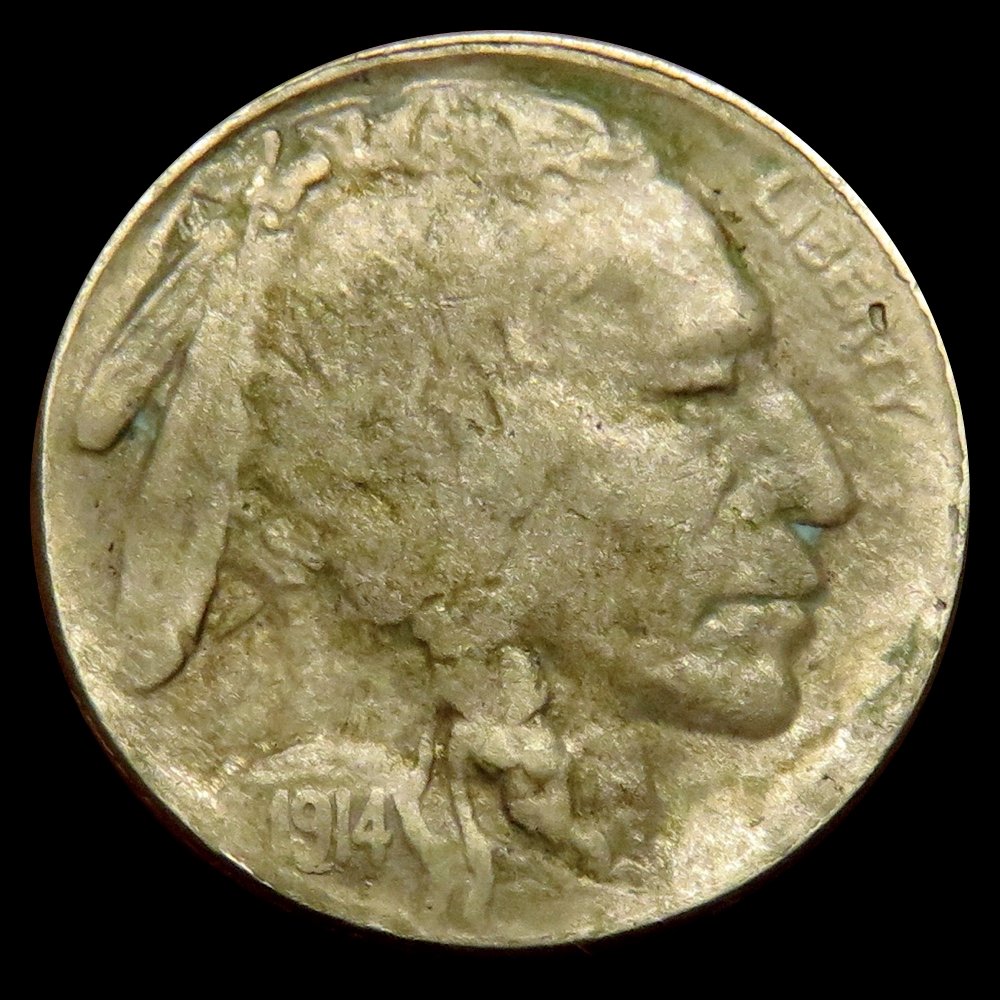
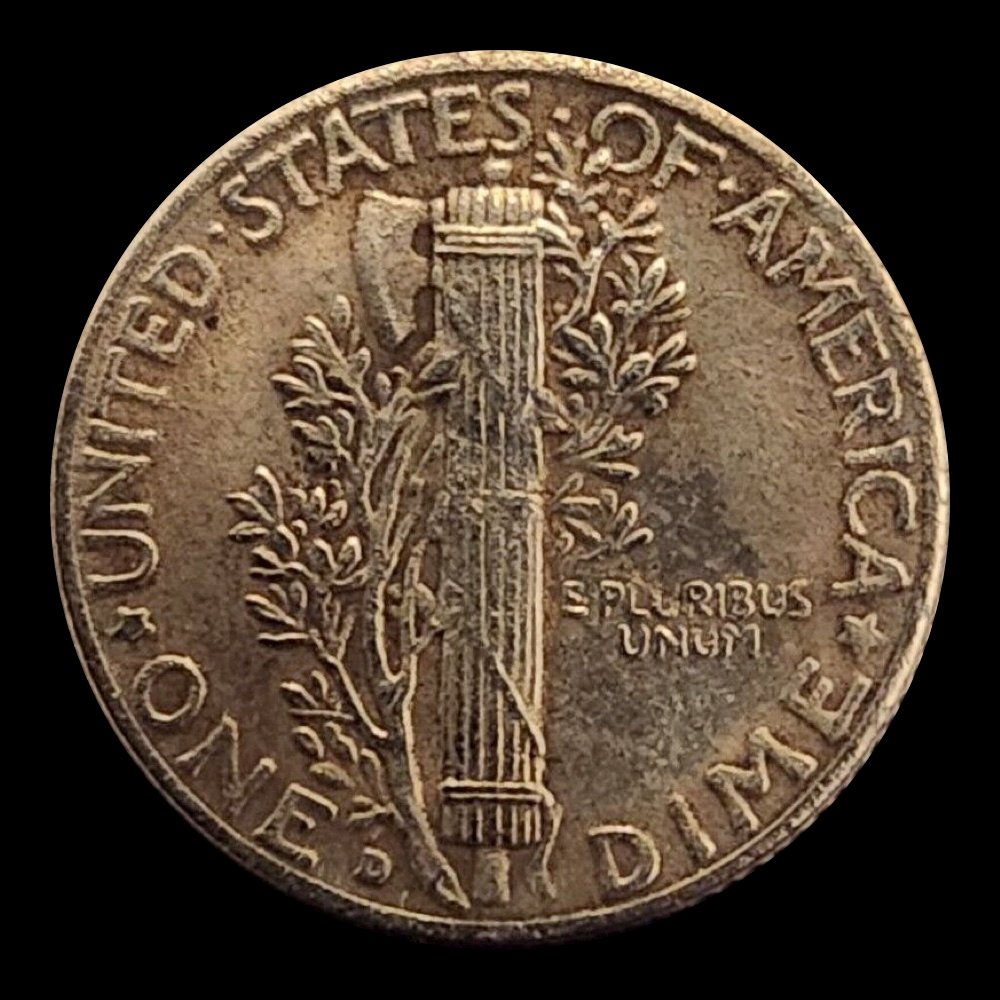
Once collector demand existed for numismatic items, fake coins soon followed.
This section deals with those items created with deception in mind.
Replica coins, marked copies sold as novelties, should not be grouped with fake coins and will not be discussed here.
There are two overarching categories of fake coins: Alterations, or doctored coins, and outright counterfeits.
Unscrupulous sellers have discovered that specific alterations to a coin's details can increase their value considerably.
In almost all cases, this process involves the addition or removal of part of the date or mintmark.
Perhaps the two most famous examples include adding mintmarks to genuine 1909-P VDB Lincoln cents or 1916-P Mercury dimes to create the far more valuable 1909-S VDB and 1916-D alternatives.
Thankfully, this practice has become increasingly minimized with the advent of countless internet-based resources providing detailed pictures of genuine examples.
News travels fast on the web, and any seller would immediately be blacklisted if found engaging in improper activities.
Most doctored or altered coins on the market today are pieces created years ago; these are usually sold by unestablished sellers on internet-based auction sites.
Collectors should carefully examine the date and mintmark of any valuable coin to scan for tooling marks and discoloration.
One should also compare these design elements to known genuine examples to search for any discrepancy in position or style.
Counterfeiters usually get this wrong.
Another group of fake coins are pieces not minted by the United States Mint--they are outright counterfeits.
The main methods of manufacture for such fakes include cast copies, where a mold of a genuine coin produces false duplicates; electrotypes, where an electroplated negative impression of a genuine coin is formed; and fake die strikes, where a die is created to strike counterfeits.
A handful of crude cast fakes had once originated in the Soviet Union and the former Bloc countries.
In recent decades, an overwhelming majority of outright counterfeit coins have been produced in China or by Chinese nationals operating in the West.
Counterfeit gold coins produced in the Middle East have also found their way west, but discussion of these is beyond the scope of this section.
Coin weight may help in determining its authenticity.
The problem is that genuine minted coins have a varying weight tolerance during production, while worn coins can legitimately have a decreased weight; furthermore, many fakes are of the correct weight.
Only if the weight is significantly off of the known values of a genuine coin could authenticity be called into question.
Many fakes have grainy surfaces, as seen in the 1916-D Mercury dime in the second image accompanying this section.
Others will have extra metal or struck holes, as in the 1914-D Buffalo nickel shown in the first image.
No genuine mint product was ever this poor. Nearly all fakes lack fine details, which can be determined using magnification.
A collector should search for fine lines or very shallow impressions that take skill and technology to replicate.
Fake coins almost always display a quality that would constitute an XF or AU grade.
Lower grades require replicating the correct wear pattern, a seemingly insurmountable challenge.
Producing an uncirculated coin with proper mint-struck luster presents another set of problems.
Counterfeit coins are also frequently toned in a light grey or brown color, both of which are imprecise attempts to recreate the illusion of usage.
The coins will never have any grime since they have not circulated.
Those who have handled tens of thousands of coins will claim that fake ones have an unexplainable character that doesn't look or feel right.
For anyone less experienced, a useful test positions the coin in question next to a series of genuine examples.
Its general appearance might appear out of place.
Interested parties often advise that collectors seek professional grading for their coins.
These companies are trustworthy and reliable but also expensive.
It is usually not cost-effective to seek grading and authentication unless the coin has a value of at least $300.
On the other hand, for high-priced key dates or the piece of mind of an unsure collector, professional grading is a valuable tool.
Strike Issues
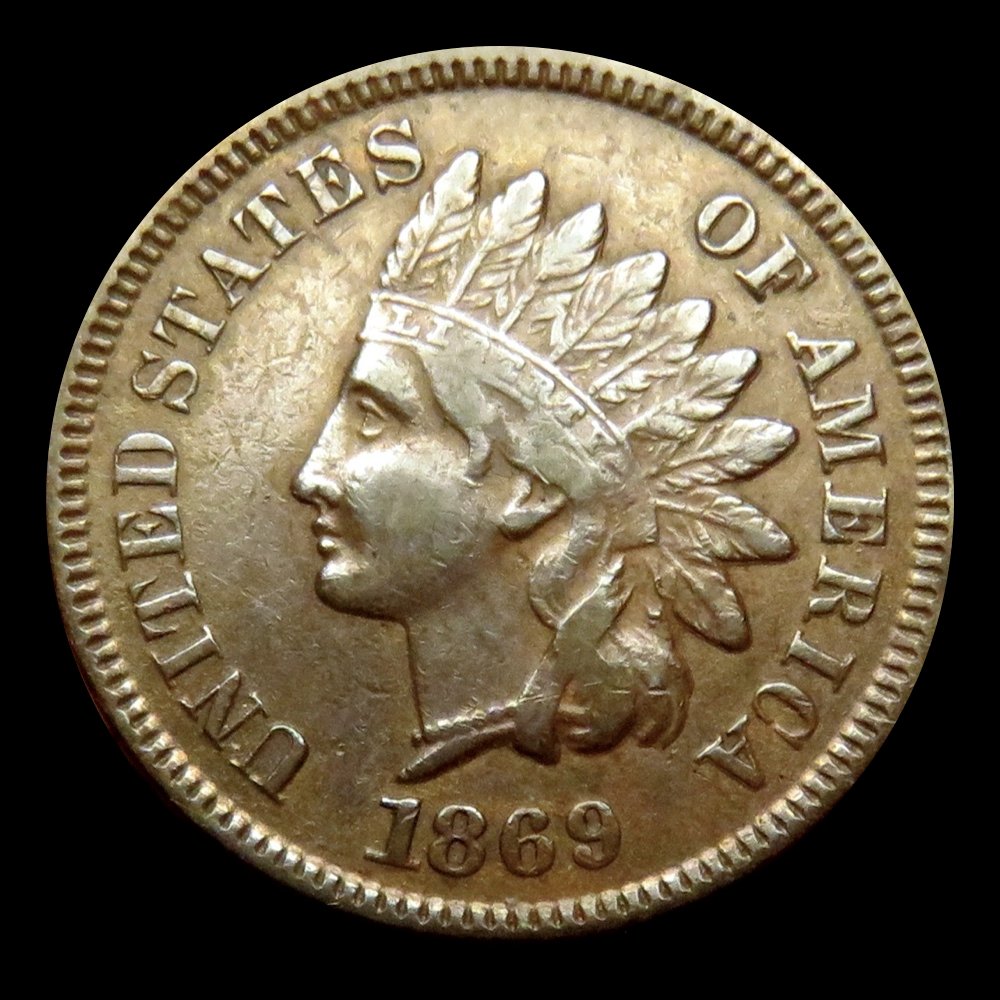
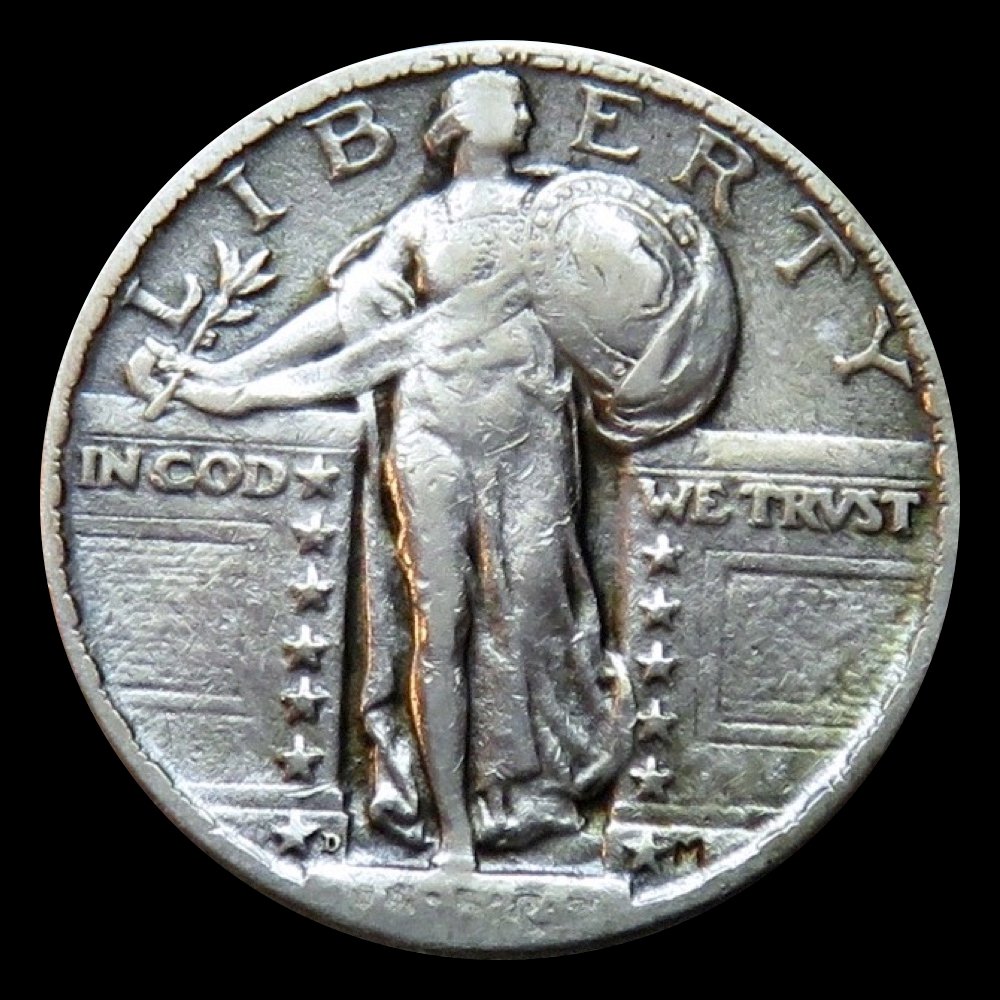
The strength of a coin's strike is a decisive factor in its perceived attractiveness.
This section is dedicated to the discussion of strike quality and will not cover any related mint errors.
Poor strikes are not considered damage but can affect value and desirability.
Any soft specimen suffers from the loss of eye appeal.
Coins leaving the mint without full details also make grading more difficult because the collector must discern between weakly struck details and those diminished due to wear.
Whenever a coin displaying a poor strike is minted, one of three reasons may be the cause.
The die used to strike coins is often the culprit.
Mint officials may have allowed a die with substandard sharpness to enter production, or some aspect of it could have evaded quality control.
Even dies originally of a high quality would have worn down or been excessively polished over their lifetime.
Poorly created dies typically strike coins with uneven design strength, while worn dies produce consistently soft details and display other issues like die cracks.
The strength of the strike impact is another factor influencing strike quality.
If insufficient pressure exists to strike the coin, it will matter little whatever quality the die possesses.
Coins displaying bad strikes due to striking pressure often show extremely deficient design elements.
In a few cases, the metal planchet is to blame for the poor strike.
Improper alloy mixes might create a specimen destined for poor quality regardless of the sharpness in the die or the strength of the impression.
Weakly struck circulated coins are usually graded without penalizing the coin for its lack of design strength.
However, anecdotal evidence suggests that these coins do not command the same prices as those with ordinary strike quality.
For example, a coin with technical XF surfaces, yet displaying detail equivalent to that of a "fine" due to strike, might be valued comparably to a VF.
Such a compromise makes sense.
A collector would rather have a typical XF than one with lesser details independent of grade, but similarly, the same collector would surely prefer an XF with "fine" details rather than a "fine" with "fine" details.
Coins are sometimes found with each side of the coin displaying uneven strike quality.
Some examples feature sharp design elements immediately adjacent to weak, blurry details.
Many series have special designations for coins with certain prioritized facets of the design exhibiting quality.
This includes "full head" Standing Liberty quarters or "full band" Mercury dimes.
In many cases, these designations ignore other potentially weaker aspects of the design, like the shield in the case of Standing Liberty quarters or the hair curls in the case of the Mercury dimes.
Other notoriously poorly-struck series, like Buffalo nickels, have no such designation.
Truly well-struck coins, probably among the first group minted with a new die and presenting broad, beautiful details across the entirety of the coin, are rare and underappreciated among collectors.
Cleaned Coins
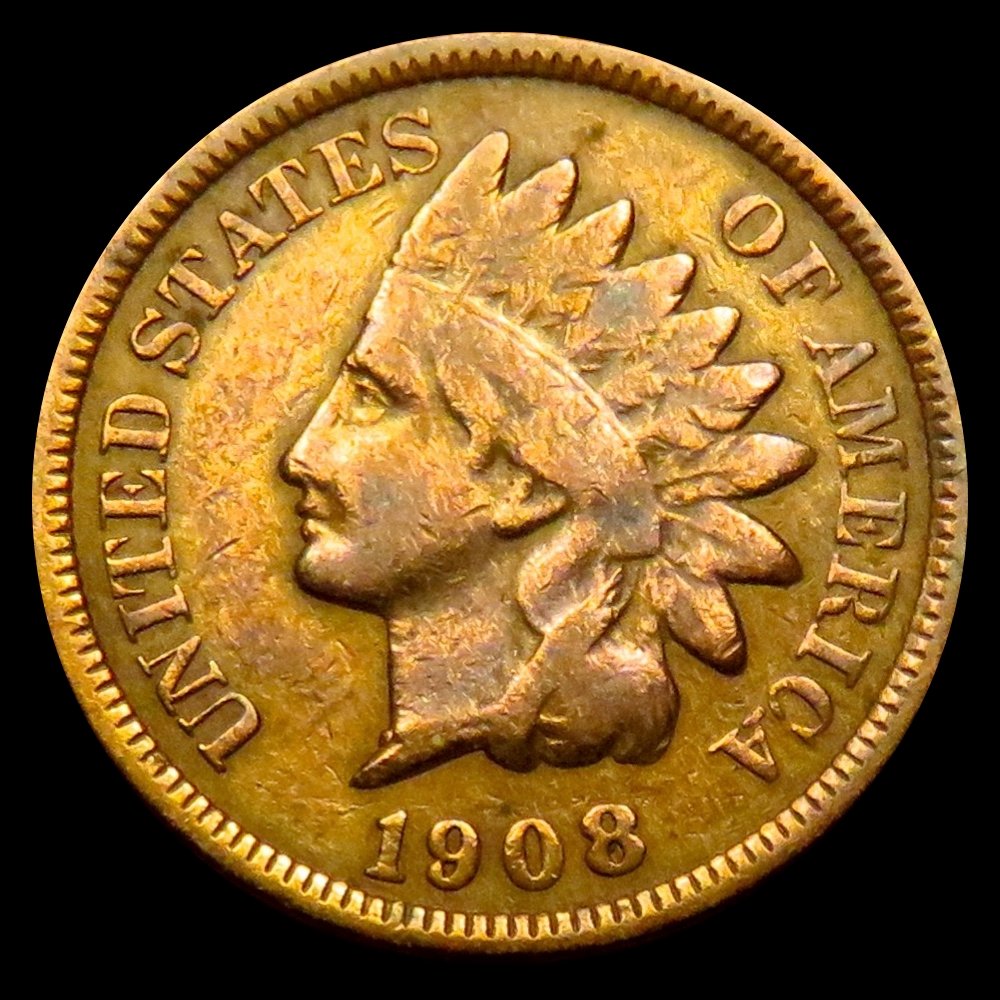
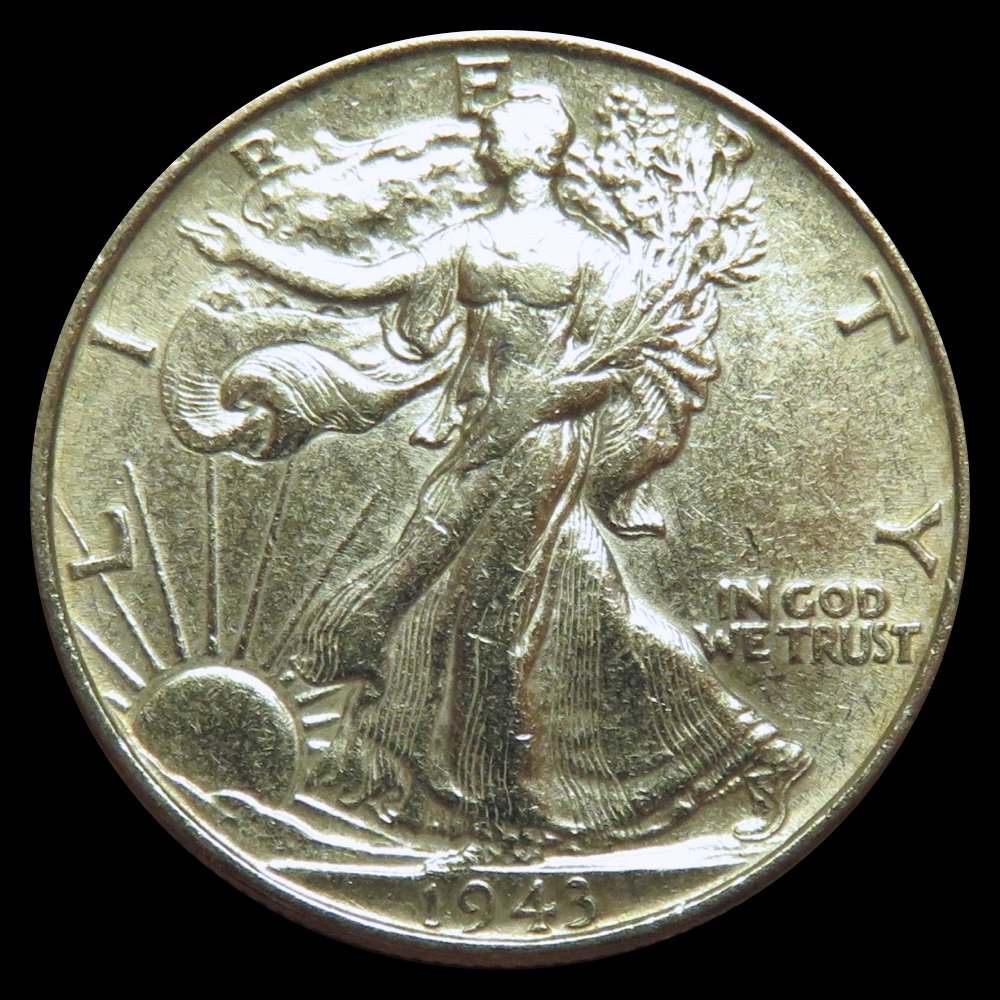
A wide spectrum exists for what constitutes a cleaned coin.
Some cleaned coins look ridiculous, while others display no signs of having had any treatment.
It is obligatory to state at the outset that cleaning is something no collector should do with their coins.
The only coins for which cleaning is indicated are those under severe environmental distress, and an expert should handle such cases to ensure the result is desirable.
The best state of preservation is the one that leaves a coin as original as possible.
Nearly all forms of cleaning, whether it is mild or harsh, involve a type of chemical.
The few differing methods will substitute some mechanical method of altering the coin's surface instead of a chemical reaction.
Something as simple as using an eraser to rub the coin is a non-chemical cleaning method.
Merciless methods of cleaning a coin, like wire-brush whizzing, also fall into this category.
Chemical cleaning is as harsh as the chemicals used.
The duration of treatment and the skill, for lack of a better word, of the person applying the chemicals also factor into the severity of the coin's resultant cleaned surfaces.
Harsher chemicals are typically acidic and sometimes contain abrasives, which require the user to scrub the coin.
Such unforgiving cleaning methods combine the chemistry of acids interacting with metal and the mechanical insult of surface tampering.
At the other end of the spectrum, light cleaning, often called dipping, is not considered cleaning by all numismatists.
This involves dipping a coin in a mildly acidic solution to remove faint toning or superficial grime.
If done too often or for too long in a single application, the coin will appear washed out.
At this point, the coin is cleaned according to most collectors.
There is a grey area here because not everyone can agree when the dipping process officially harms the coin.
A mildly dipped coin is indeed virtuously indistinguishable from one with true luster, but any dipping technically does impact the coin's surface.
Cleaning will efface metal from the surface of the coin.
Coin enthusiasts claim that cleaning removes the coin's outer layers.
A coin alloy does not have any layers, but for all intents and purposes, this is an apt way of visualizing what happens.
Cleaned coins may be "shiny" but will not show any cartwheel luster.
They will appear dull, flat, and of a color dissimilar to an uncleaned coin of the same series and grade level.
A lack of surface grime for circulated pieces is another tell-tale sign.
Most cleaned coins will show hairlines, especially under magnification, but these are absent on dipped coins.
Cleaned coins are sometimes further subjected to polishing or artificial toning.
A cleaned coin also has surfaces more susceptible to future damage since the natural oxidation process (which leads to everything from toning to corrosion) has been actuated and accelerated.
Both the images accompanying this section show coins with moderate chemical cleaning.
The examples are not altogether unattractive, but they do not appear as similar uncleaned coins would.
Most collectors consider this to be damaged, and any cleaned coin's value has been reduced equivalent to the purchaser's estimate of the severity of the cleaning.
Part of the attraction of coin collecting is the allure of holding history, or at least the ability to possess something that definitively experienced that history.
Cleaning a coin is thought by some as a way of washing away its past.
Artificial Toning
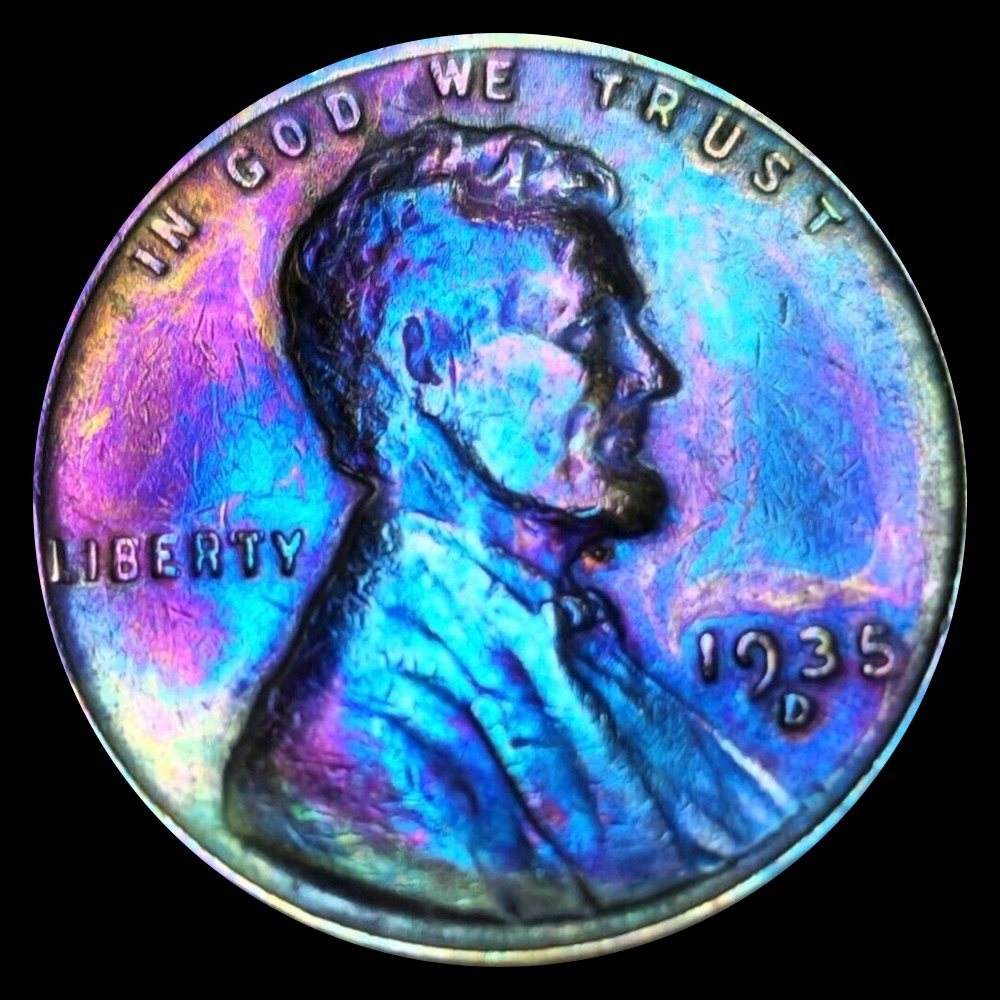
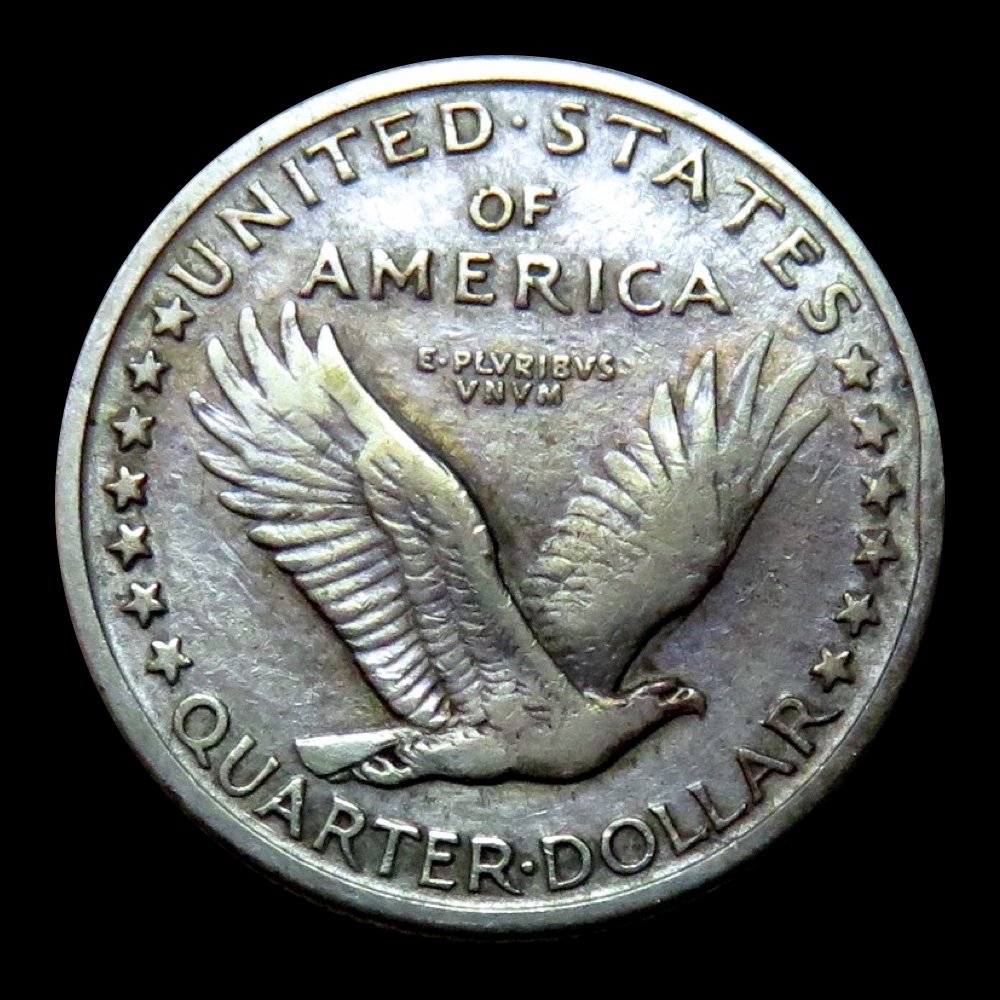
Metal is reactive to its environment, and every coin will tone given enough time.
The speed at which this reaction occurs depends on many factors, but atmospheric conditions and the types of metals involved are predominant.
All coins consist of alloyed metals.
Even modern bullion coins contain a small fraction of base metal.
Copper or zinc alloys are the most reactive, while gold is the least reactive.
Coins containing large amounts of silver or nickel would fall in between.
Coins are often minted with a shell made of one metal and a core made of another.
For such cases, the outside material determines to what extent a coin will tone.
For any metal, humidity and higher temperatures will result in quicker reactions.
Notable shifts in these conditions, especially sudden or frequent, will also contribute to toning.
Generations ago, when collectors housed their coins in wooden cabinets or other environments potentially conducive to toning, the eventual changes in color were appreciated or at least accepted.
Some early coin albums or display boards also resulted in toning.
For debatable reasons, the collector culture shifted during the 1960s through the 1980s, and many collectors preferred coins with untoned surfaces.
This also gave rise to the unfortunate and temporary trend of cleaning one's coins.
Since the 1990s, the trend has reversed, and the popularity of toned coins with as vibrant a color as possible has been growing.
Dealers wanting to cash in on this trend and collectors unwilling to await long-term results started artificially toning their coins.
Most methods for toning coins include chemicals or heat.
So what is an artificially toned coin?
The regrettable answer is that the industry still has not decided.
One can imagine a naturally toned coin as one sitting in a wooden box for twenty years, while an artificially toned example conjures images of someone wearing safety goggles and subjecting a poor coin to various treatments.
All those circumstances in between such extremes have created controversy.
Some individuals have convinced themselves that any toning method without direct applications of chemicals or heat other than sunlight is natural; leaving a coin on a hot windowsill inside a high-sulfur cardboard wrapper is fair game.
Others believe any procedure specifically designed to tone a coin, even if it is merely an accelerated version of a natural process, is artificial toning.
The interest in toned coins is derived from the idea that such a piece has history and character.
It is unclear why an untoned piece would necessarily have less history or why color increases character, but many feel this is the case.
If someone forces color onto a coin's surface, as in the first example image accompanying this section, the result has neither history nor character but perversion.
If someone uses mild artificial toning to hide an existing problem, as in the second example accompanying this section, the outcome cannot be favorable in the context of history and character.
If a coin is properly housed in a manner that may cause toning over time as a side effect, even if the result is anticipated or sought, the coin should be considered natural.
If shortcuts are taken, despite the coin not being burned at the stake or treated as a lab subject, it should be considered artificial.
Instinctively, all collectors would prefer their toned coins to reach that stage over time and under normal circumstances, so why should technicalities over heat, chemicals, and time cause any confusion?
Impact Damage to the Coin's Surface
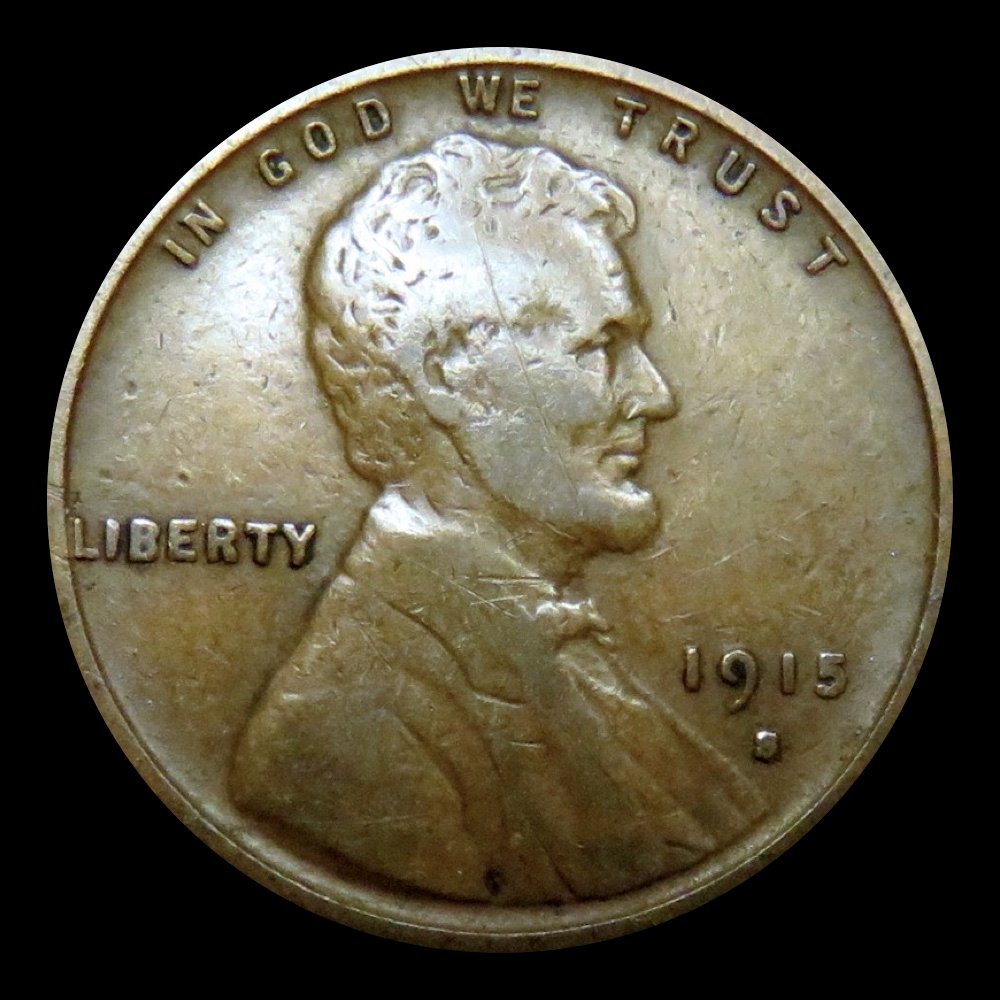
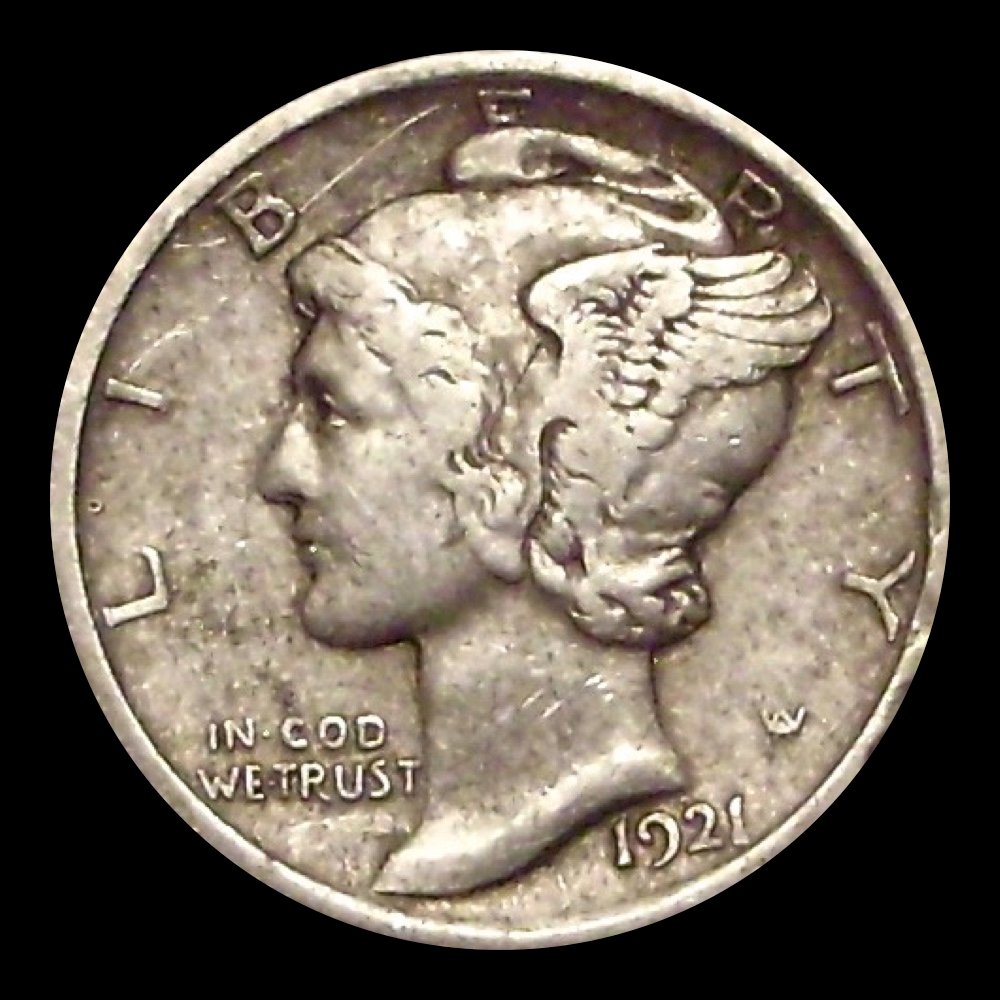
The term "impact damage" was chosen to represent any sort of post-mint damage resulting from some foreign object leaving a mark on any of the coin's surfaces, including the side of the rim.
In most cases, this category describes coin issues due to accidental scratches or significant hits to the surface metal.
The damage may also be purposeful, as in the case of drilling a hole.
Occasionally, a machine is at fault, such as when a coin-wrapping device leaves a circular scratch close to a coin's edge.
The different types of impact damage and their myriad causes are less important than determining when the insult is worthy of a lower grade and value.
From a logical standpoint, every blemish on a coin's surface is technically "impact damage."
Even an ostensibly perfect coin would have some flaws if examined under a microscope.
Such an interpretation is unreasonable, and collectors would not consider grading their coins like this.
Surface marking is evaluated based on length, depth, focal area, and the grade level of the coin on which it occurs.
The size of the coin and the type of the coin matter as well.
Length and depth refer to how long the scratch/hit/mark is and how deep it penetrates the coin.
Obviously, longer and deeper are worse.
The focal area pertains to where the insult occurs relative to certain design elements.
Marking on important aspects like the center of the primary device or the coin's date is more bothersome.
Marking in the fields is also not preferable since it tends to stand out more.
No marking would be ideal, but if it exists, the best place for it to occur would be to a secondary design feature, like the lettering of a motto or even better, the rim itself.
The general grade of the coin also determines how one considers any marking.
The lower the coin's grade, the more acceptable any impact damage becomes.
Coin size matters because the same mark would appear worse on a small coin than on a larger one; hence, there are no guidelines with specifications or measurements.
Finally, type is a factor because heavier coins, those with softer metals, and those with more susceptible designs cannot be treated equally with others having favorable characteristics.
The preceding summary provides a general idea of how to grade and value impact damage.
So what does it really mean, and how can anyone without years of experience use all the information?
The real question is whether the damage counts or if it is market acceptable.
The basis for the entire examination process is the standard of "Does it bother me?" or the slightly more technical "Is the coin interchangeable with another of the same grade without the scratch?"
The preceding paragraph describes the criteria that graders use to answer these basic questions.
The images provided in this section are a case in point.
Some depiction of a severe scratch could have been shown, but anyone could imagine what this looks like.
Two borderline coins were chosen.
The Lincoln cent has a thin scratch across the face.
The scratch is not serious, but it would bother most people, and no one would purchase this coin for the same amount as a similar one without the scratch.
The scratch on the Mercury dime is a bit deeper and slightly shorter, but generally the same.
It does not occur on Liberty's face.
On some level, one could argue that any marking is always worse, but most collectors would consider this scratch acceptable for the grade.
One note should be made regarding the impact damage commonly called "graffiti."
This is a purposeful marking scrawled on a coin's surface.
In generations past, people would carve into coins their initials, or an "X," or the like.
For whatever reason, there is little tolerance for this type of damage.
Occasionally, the graffiti includes a reference to a historical time, place, or person.
In such cases, the coin may have demand.
For typical carvings, however, graffiti is valued the same as severe scratching.
Environmental Damage
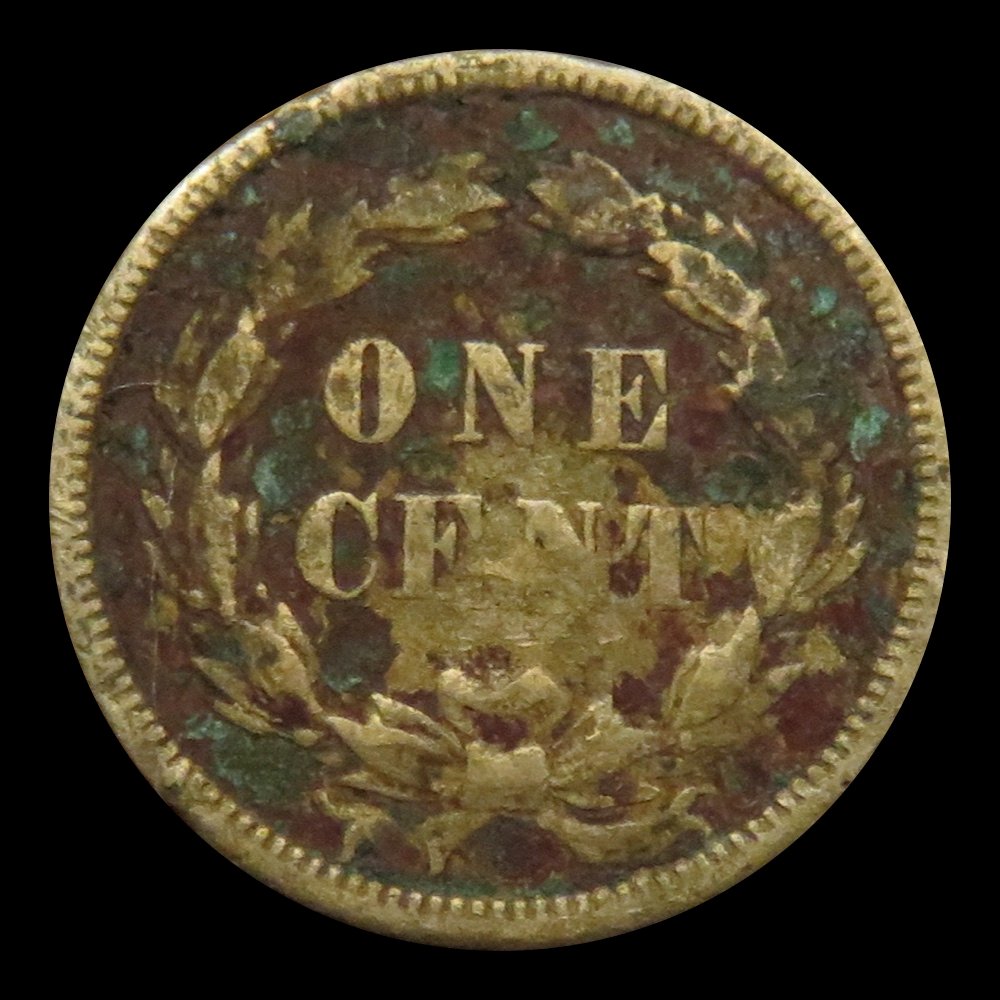
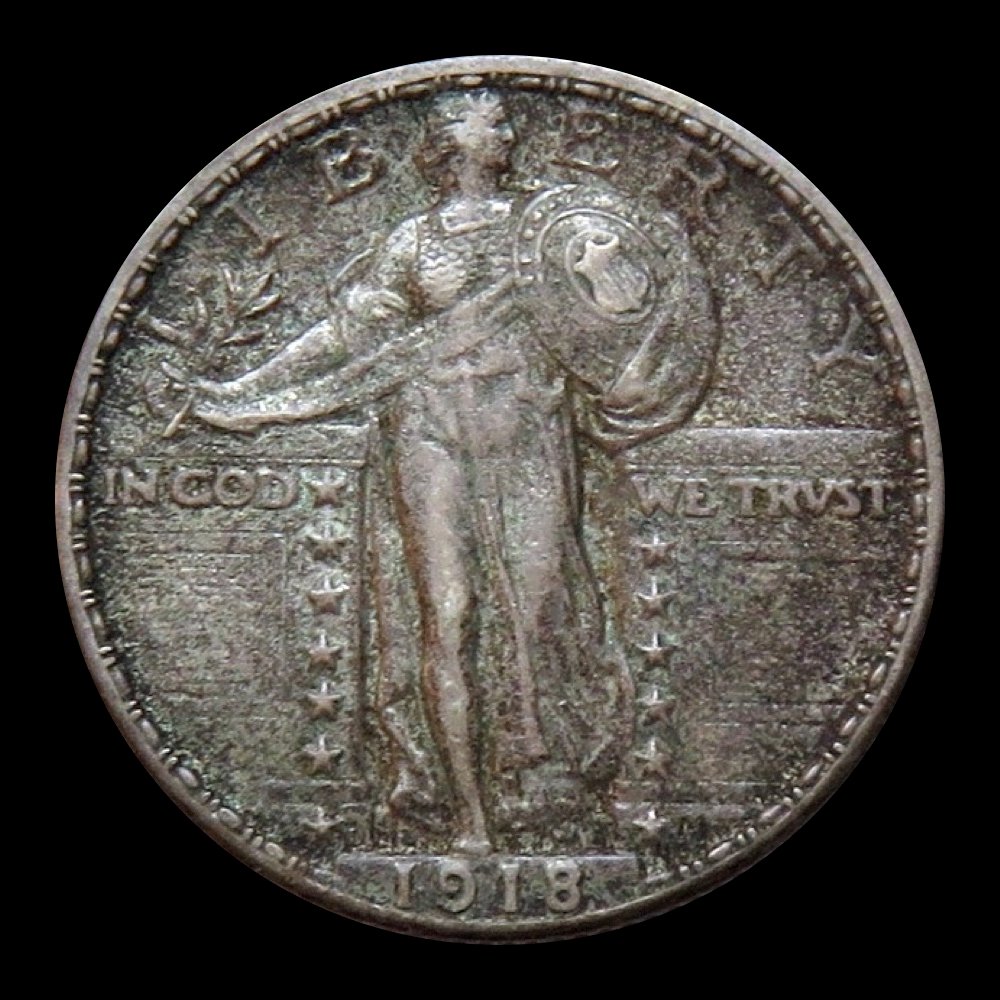
Environmental damage is a broad term assigned to any problems associated with the coin's surface caused by something other than physical impacts.
A coin could have non-reactive issues, like surface erosion on a previously buried coin, but the reaction is present and ongoing on most environmentally damaged coins.
In all such cases, this refers to corrosion.
Corrosion could manifest in varying colors and textures, but it is always the result of the coin's surface metal reacting with its environment.
Metal oxidation causes the unsightly buildup found on corroded coins.
It may come as a surprise to some to learn that toning is simply a shallow and comparatively mild form of corrosion.
It is generally considered attractive and is not the focus of this section.
The real problems include the greens, reds, and blacks growing on and in the metal of coins.
Corrosion is typically considered one of the most serious problems afflicting a coin.
The level of concern is linked to the degree of corrosion, but all being equal, a collector would rather have a cleaned, artificially toned, weakly struck, or scratched coin than one being eaten alive.
One reason for this is that corrosion will likely continue to disintegrate the coin's surface over time--the problematic reaction is ongoing.
A cleaned coin will not clean itself further, and a scratched coin will not cut more over time.
In fact, a cleaning may be recommended for corroded coins as the lesser of two evils.
Pockmarked examples, often called "porous," are the result of harshly cleaned coins previously marred by even harsher corrosion.
The reader should note that some porous coins arrived at that state due to exposure to an acidic environment, a form of environmental damage in and of itself.
The disfiguring impact of corrosion is evident in the first example image in this section.
The reverse on this Indian Head cent has been ruined due to oxidation, leaving an accumulation of greens and reds.
The corrosion does not sit on top of the metal: It is the metal.
Any environmental damage that appears raised is merely a result of the end reaction occupying more volume (with less density) than in its former state as a lustrous coin surface.
The second image features a coin with environmental damage that is almost market-acceptable.
The coin is deeply toned, yet the toning has begun to exhibit a visible adverse reaction in the metal.
This example would still be desirable as a collectible, but a collector needs to properly house the coin and cease or significantly slow the reaction.
One type of environmental damage viewed as distinct from the corrosion that impairs most of the coins considered in this section is staining.
Stained coins do not undergo an uglifying chemical reaction and are appropriately grouped among the milder "problem coins."
Many stained coins retain a look similar to toning, though stains are often jagged and a displeasing color.
Staining is best valued according to its potentially unattractive appearance, but not as damage.
Miscellaneous Other Problems
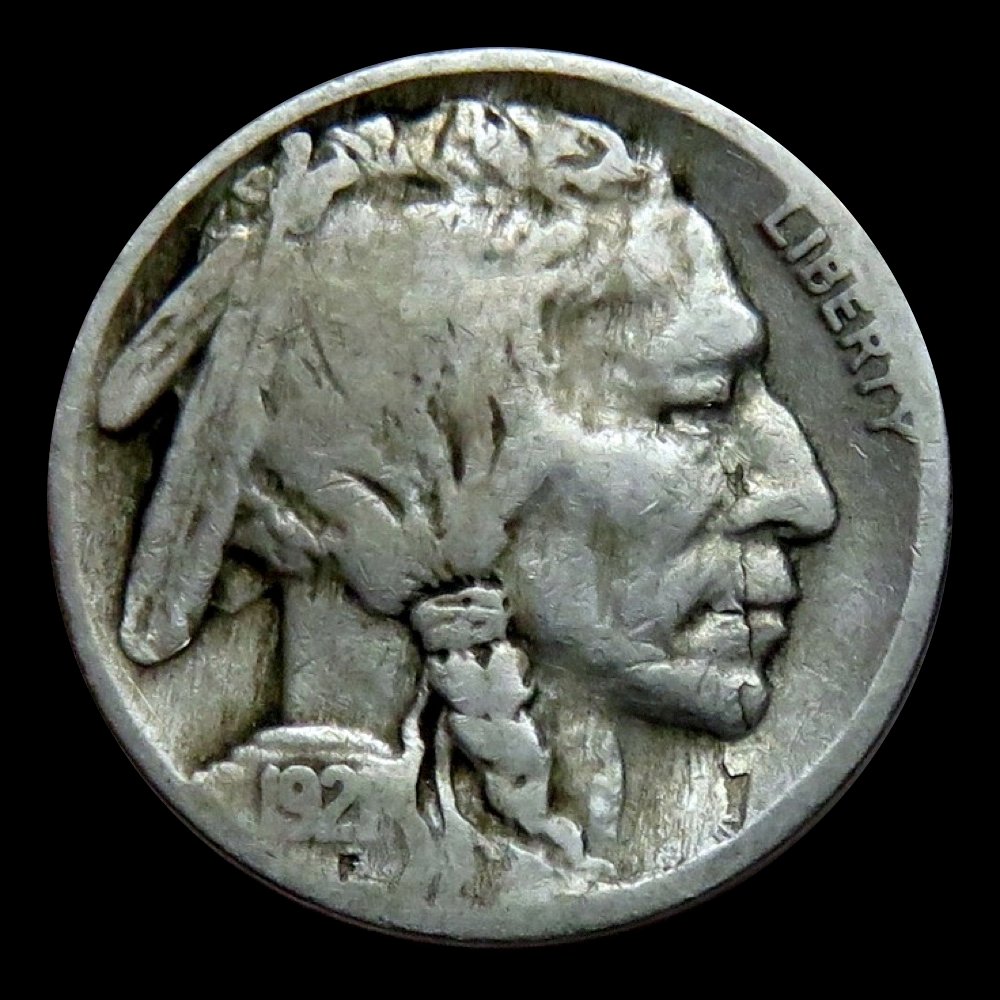
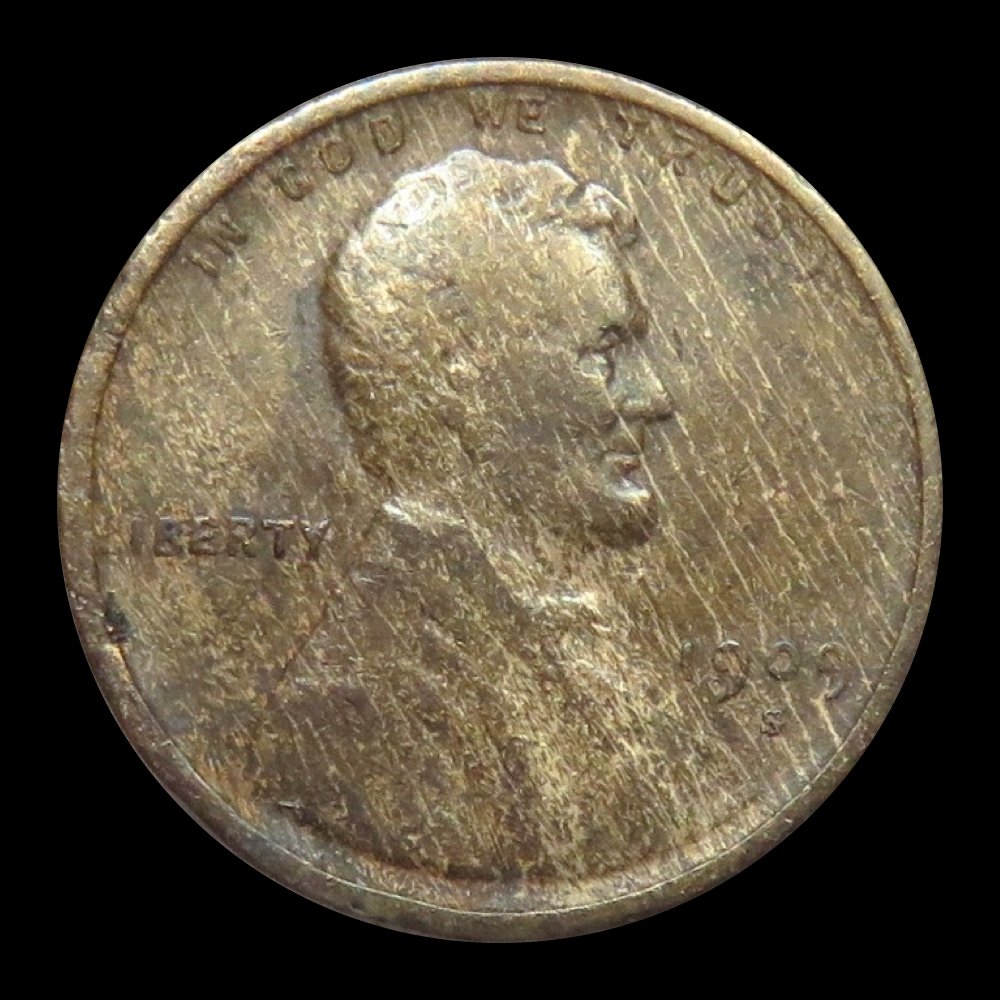
Some coin issues do not neatly fit into the categories defined on this page, hence the separate encompassing category of "miscellaneous other problems."
While any number of obscure issues sometimes affect coins, the ones described here are the most common.
The section deals with lamination errors, planchet mixing, PVC damage, and bent coins.
Lamination errors occur when impurities exist in the coin's alloy, resulting in a delamination of surface metal.
Whenever lamination errors occur, it is technically the result of a mint error, but such coins do not have collector demand as other error coins do.
The exception to this rule is for examples displaying large and dramatic pealing laminations, those so severe they become interesting.
Lessor laminations are a mere nuisance, and collectors believe they are unattractive.
The first image in this section shows a Buffalo nickel bearing a minor lamination that looks like little more than a crack.
With more pronounced lamination errors, the coin's metal often shows as peeling or having already peeled off the surface.
Coins with nickel alloys appear to be most susceptible to this problem, but copper coins are afflicted as well.
It is not unheard of to find a laminated silver coin, but these are more scarce.
Another issue resulting from a mint error concerns those specimens bearing what is commonly called the "woodgrain effect."
The second image accompanying this section demonstrates the phenomenon.
The coin's surface appears as though it were made of wood.
When copper and zinc are alloyed improperly, each metal occupies distinct sections of the coin.
Copper and zinc tone differently and at different rates, producing varying colors found on coins with incorrect alloys.
Woodgrain toning commands premiums only if the coin is especially attractive, and then, only slight price increases exist.
Likewise, unattractive woodgrain toning will result in a lower-priced coin.
PVC damage has been the bane of coin collectors ever since coins were stored in plastic products.
Various additives added to PVC (plastics) can degrade, and the residue will react with a coin's surface.
Copper, nickel, and silver all will fall victim to this.
In its early stages, PVC damage may appear as a pale haze, but more prolonged reactions result in green or blue-green blotches.
While the haze is only mildly distracting and can usually be removed, the more serious progressively deteriorating reactions are as dreadful as corrosion.
Bent coins could be grouped in the "impact damage" category, yet they often appear without obvious hits or marks.
Most coins categorized as "bent" display only minor curvature since the force capable of bending a coin more than this would break it.
Bent coins often sell for significantly depressed values despite displaying less distracting problems than other coins available for large price deductions, like those that are holed or badly corroded.
The term "bent" appears to elicit particularly negative reactions.